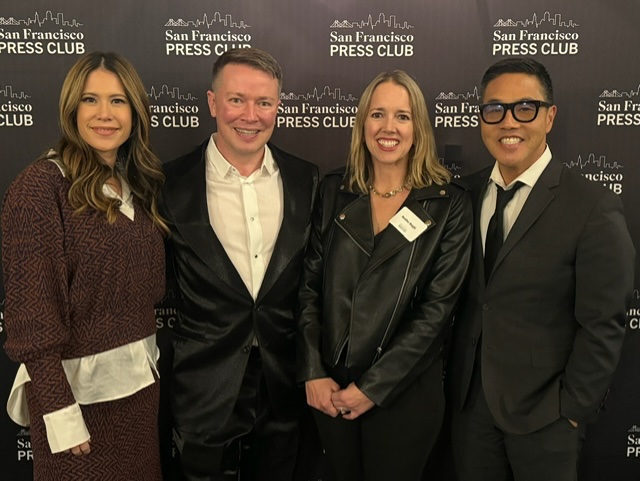According to TV critics, both “Andor” and “The White Lotus” deserve our attention.
The New York Times found 10 different reasons to publish articles about the second season of the storied hotel chain, with headlines evoking memories of earnest college essays.
Meanwhile, USA Today ranked “Andor” the absolute best show of 2022, besting #2 “Reservation Dogs” and #3 “The White Lotus.” While The New York Times didn’t commission 10 different stories about the Star Wars series, it did publish Jamelle Bouie’s essay in its newsletter: “’Andor’ Is the Best Star Wars Anything in Quite a While.”
So, clearly these are shows we needed to watch.
And I loved them both.
“White Lotus” touched on my love of travel, camp (Jennifer Coolidge) and even crisis communications.
As for “Andor,” I’ve always had a soft spot for anything Star Wars. I grew up with the movies in the 70s and 80s and even played the Emperor’s Theme as my personal wedding march. Plus, it helps that “Andor” has a Rogue One vibe to it, which rewards Gen Xers like me who like our good guys a little bad.
But what about the third season of “Emily in Paris?”
The New York Times only published three stories on the hit series, and, clearly, they TOTALLY appreciate everything the show has to offer:
- ‘Emily in Paris’ Returns, With Even More Fantastical Fashion
- ‘Emily in Paris’ Star Lily Collins on Her Own Trauma Haircut
- Emily Is Still in Paris. Why Are We Still Watching?
How can communicators justify their love of entertainment’s heavily mocked series?
The last article, written by Iva Dixit, seemed to shame anyone for enjoying Darren Star’s younger, Frenchier version of “Sex and the City.” The subhead of Dixit’s dismissal made my love of the show feel commonplace: “The Netflix hit has been widely mocked from the beginning. But despite its flaws — or perhaps because of them — it’s a pop-culture phenomenon.”
Dixit claimed many people who watch are not true fans but “hostages” who keep watching “despite our bewilderment — like Emily butchering her hair — even though we know it’s a mess.”
So, should I keep my love for Emily secret?
Should I be ashamed?
At the start of January, I traveled to the setting of her fictional office after visiting my French in-laws for the holidays.
To me, this setting is the heart of season three.
The season begins with the episode “I have two lovers.” It’s not romantic love that the first half of the season explores but rather a professional romantic triangle. Will Emily Cooper choose to work for her first boss and American mentor Madeline Wheeler? Or will it be her new French patron, Sylvie Grateau?
The third season invests five of its 10 episodes on Emily’s professional whereabouts. It’s not just a matter of who she will work for but also where she will office. Emily’s two bosses conspire over who will lay claim to the workspace above Galerie Patrick Fourtin, an antiques store near the Louvre. Channeling guile and sex appeal worthy of 1988’s “Dangerous Liaisons,” Sylvie triumphs and takes back the office. When we learn that Emily will have to return to Chicago if she stays with Madeline, it’s a fait accompli that she will return to the Place de Valois. Each episode that follows returns to that setting, making it as iconic as Mary Tyler Moore throwing her hat in the air for her eponymous show.
Say what you will about the lack of dramatic tension in the show, but nearly everything Emily does resonates with me on a professional level. I’ve worked with founders navigating the complexities of acquisition, from feeling like they have won the lottery to being removed from the company they built. I’ve dealt with clients who have had supply chain challenges threaten to ruin their company, only to pivot or find a crazy idea that just might work. I’ve seen what happens when you secure your place on a professional list. I’ve also worked to secure similar professional coverage for my colleagues and even competitors.
And, like Emily, I’m a sucker for a say-something outfit – even if that outfit says too much!
So it’s more than just being a fan of “Emily in Paris.”
In many ways, I am Emily.
It’s a touch like Spartacus, and while I don’t have the bangs or romantic entanglements, this program speaks to me – and many marketers and PR professionals. While Emily is accused of being escapist fantasy, that criticism seems more apt for “Andor” (which takes place in a galaxy far, far away) or “The White Lotus” (which is a product placement for exotic locations of the Four Seasons hotel chain). “Emily in Paris” celebrates the career of any communicator whose best laid plans have been upended and who has to come up with something new and clever to save the day. All with a smile on our faces.
That’s not to say the show oversimplifies our day-to-day challenges.
With Emily, I, and many other marketers, feel seen.
So, take that, New York Times.
Je suis Emily!




